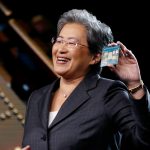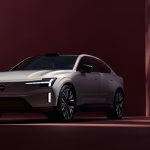
Snap to Launch Standalone AR Glasses in 2025, Beating Rivals
6 minute read

Social Media Giant’s Standalone AR Glasses to Launch After $3B Development, Setting Stage for Consumer AR Race
Three Key Facts
- Snap invested over $3 billion across 11 years developing AR glasses technology, positioning itself to potentially become the first major tech company to launch consumer AR glasses in 2025
- The global AI/AR glasses market reached 1.52 million pairs sold in 2024, with projections indicating explosive growth to 90 million pairs by 2030
- Snap’s consumer AR glasses will feature fully standalone operation without external compute packs, targeting key adoption barriers that limited previous AR devices
Introduction
Snap accelerates its ambitious push into augmented reality hardware with plans to launch consumer AR glasses in 2025, marking a pivotal moment in the wearable technology landscape. The announcement positions the social media company as a frontrunner in the race to bring true AR experiences to mainstream consumers.
This strategic move represents the culmination of Snap’s decade-long journey in smart glasses development. The company previously released three generations of camera-equipped glasses and has been refining AR capabilities through developer-focused iterations.
CEO Evan Spiegel emphasized the company’s long-term vision during recent industry presentations. The executive noted that Snap was developing glasses technology even before implementing chat features in its core platform, highlighting the fundamental role AR plays in the company’s future strategy.
Key Developments
Snap’s upcoming consumer glasses, branded as Specs, will debut with significant technical improvements over previous developer versions. The latest development kit featured a 46-degree field of view and 45-minute battery life, though it weighed 226 grams.
The consumer version promises substantial refinements in form factor and functionality. According to Investing.com, Spiegel claims the production model will deliver “a much smaller form factor, at a fraction of the weight, with a ton more capability.”
Strategic partnerships enhance Snap’s development capabilities. The collaboration with Niantic Spatial strengthens the Lens Studio platform, enabling creators to design and publish AR experiences more effectively.
The glasses will operate as standalone devices without requiring external compute packs or battery systems. This approach differs from competitors like Meta, whose Orion prototype relies on wireless compute pucks, and Apple, which may leverage iPhone processing power for future AR devices.
Market Impact
Snap enters a rapidly expanding market segment that has gained momentum through Meta’s Ray-Ban collaboration success. The AI/AR glasses industry has witnessed remarkable activity, with over 30 new products launched within the past year.
Current market performance shows strong foundation for growth. Global sales reached approximately 1.52 million pairs in 2024, establishing consumer interest in smart eyewear technology.
Timing advantages could prove crucial for Snap’s market positioning. Meta plans to ship its first consumer AR glasses in 2027, while Apple’s entry may not occur until 2028. This timeline gap presents Snap with a potential first-mover advantage in true AR functionality.
The competitive landscape intensifies as major technology companies accelerate their development efforts. Google recently unveiled AR products, while Meta prepares to launch glasses with built-in displays later in 2025.
Strategic Insights
Snap’s approach reflects careful consideration of previous market failures in AR hardware. The company addresses critical adoption barriers including device weight, battery constraints, and processing limitations that hindered earlier products.
The fully standalone architecture represents a significant technical achievement. Packing AR computing capabilities into lightweight eyewear requires substantial engineering advances and component miniaturization.
Content ecosystem development remains essential for success. The enhanced Lens Studio platform and Niantic partnership aim to create compelling use cases beyond basic social media functions, including translation services, educational applications, and AI assistance.
Revenue diversification opportunities could reshape Snap’s business model. The company’s substantial investment indicates expectations for significant returns from hardware sales and related services.
Expert Opinions and Data
Industry analysis supports optimistic projections for AR glasses adoption. Market researchers forecast growth to 90 million units annually by 2030, representing nearly 60-fold expansion from current levels.
Spiegel articulated the company’s broader vision during the Augmented World Expo. “We’re obsessed with making computers more human,” he stated, emphasizing AI integration possibilities when AR moves beyond traditional screens into real-world environments.
Technical specifications demonstrate meaningful progress from earlier iterations. The first AR development kit offered only 26-degree field of view and 30-minute battery life, while recent versions show substantial improvements in both metrics.
Financial performance data reveals Snap’s capacity for sustained investment in AR development. First quarter revenue grew 14% to $1.36 billion, while net losses decreased 54% to $140 million, providing resources for continued hardware innovation.
User base statistics underscore potential market reach. Snap maintains over 900 million monthly active users and 460 million daily active users, creating a substantial audience for AR glasses adoption.
Conclusion
Snap’s consumer AR glasses launch represents a calculated bet on the future of human-computer interaction. The company leverages extensive development experience and strategic partnerships to address technical challenges that have limited previous AR hardware success.
Market dynamics favor early entrants who can deliver compelling AR experiences at consumer-friendly form factors. Snap’s standalone approach and timing advantages position the company to capture significant market share in an rapidly expanding segment.
The success of this initiative will depend on execution across multiple dimensions including hardware performance, content ecosystem development, and pricing strategy. Snap’s decade-long investment and technical progress suggest serious commitment to establishing leadership in consumer AR technology.








